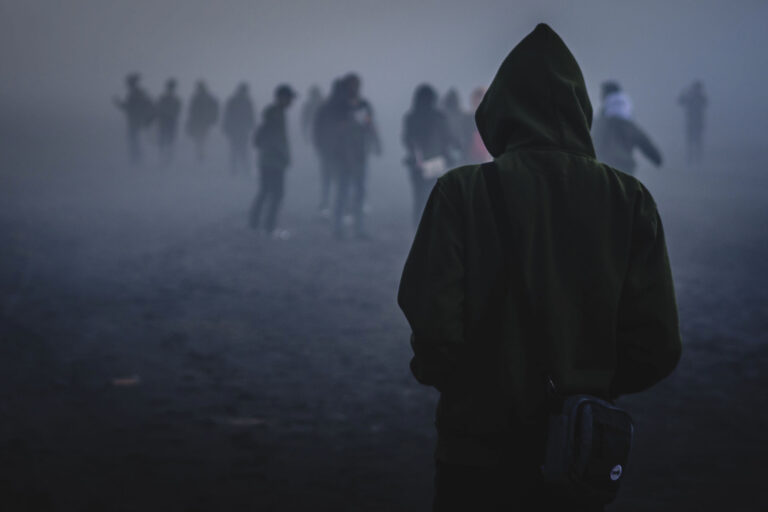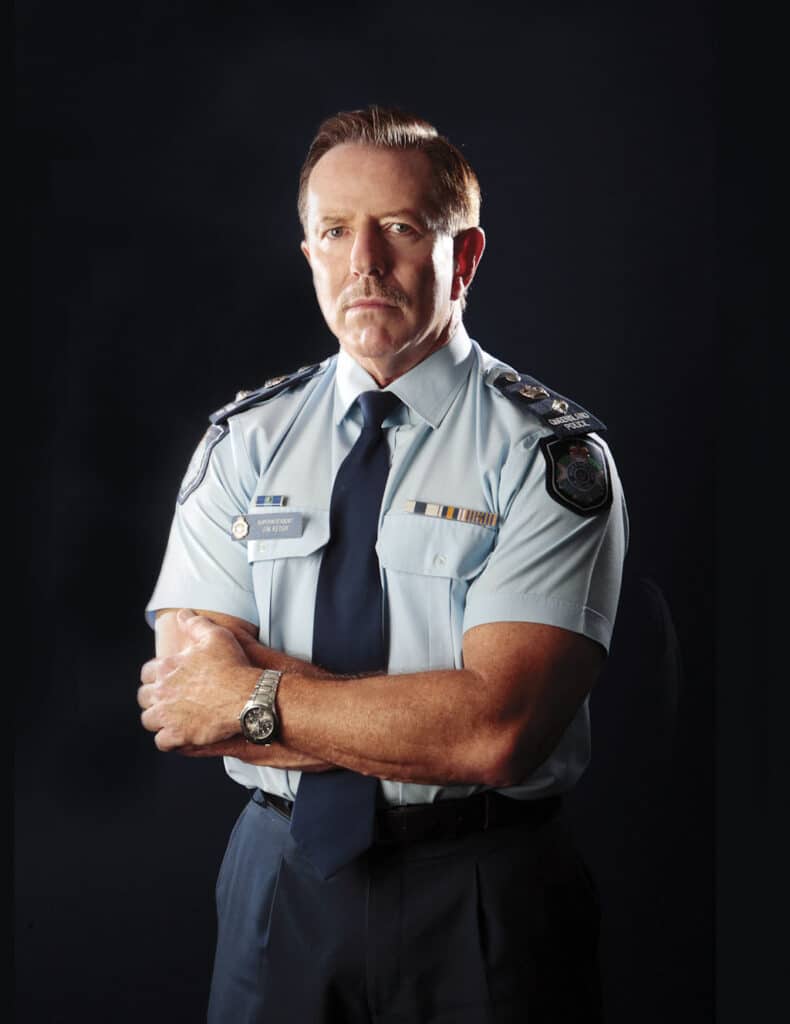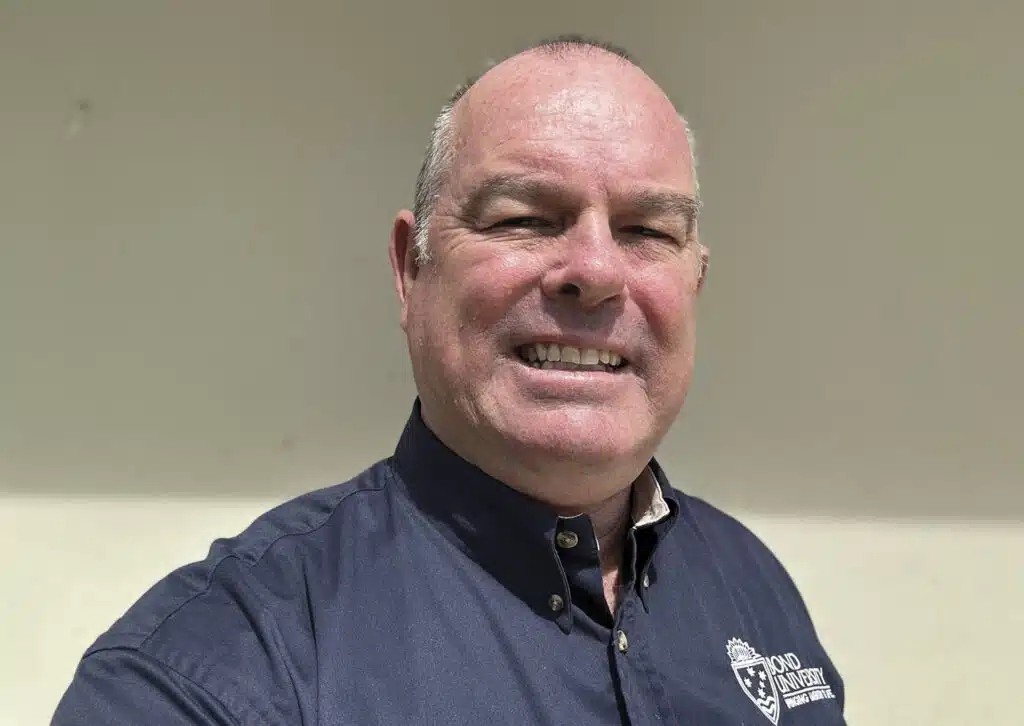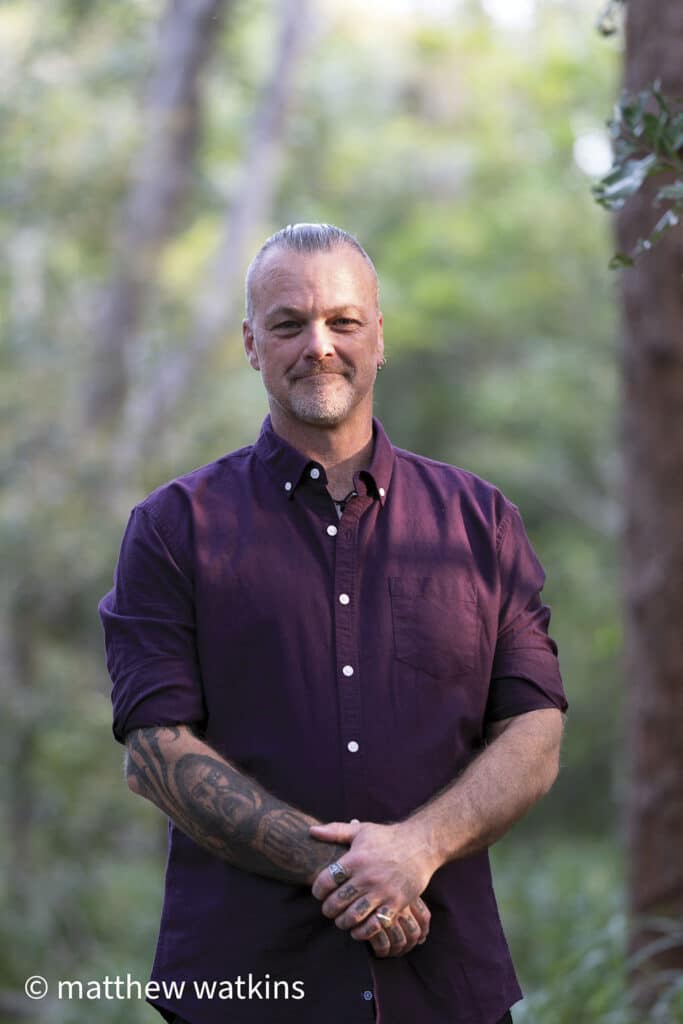CRIME
YOUTH CRIME What’s the answer?

WORDS: Corrine Barraclough PHOTOGRAPHY Hajran Pambudi @Unsplash (Main image) and Supplied
Every day more news breaks with a shocking latest story about youth crime. What’s going on? What’s at the heart of the problem? And how on earth did we end up here? Corrine Barraclough reports.
Anger has spilled out onto Queensland streets as hundreds of locals repeatedly protest the state’s youth crime laws and escalating crisis.
New youth crime laws were introduced in March, and since then there have been more than 1900 charges for breach of bail. Reoffending has hit an alarming rate of 69 per cent.
Protestors in Brisbane marched to Parliament House and handed a six-point plan to the youth justice minister, the police commissioner and the police minister.
One of the protestors told 9News she just wanted to feel safe in her own home after a group of youths broke in. “They spent 40 minutes trying to get into the house, they were trying to pry open all the windows, the doors, they tried to get into our kids’ bedrooms,” she said.
Another protestor said his home had been broken into twice in the last three years. In one break-in, youths stole his wallet and by midnight they’d racked up $1000 on his cards.
Another told how their house had been ransacked – savings, jewellery and car stolen.
Day after day, the horrendous stories keep pouring in.
Making matters worse, Premier Annastacia Palaszczuk has repeatedly declined to meet with protestors and hear them out. Finally, some progress was made in early November.
Police Commissioner Katrina Carroll said, “We’ll continue to put these offenders behind bars, that’s our job and that’s exactly what we’ll keep doing.”
Unfortunately for Palaszczuk, Carroll and the wider law enforcement agencies, it’s not an issue that they can ignore or attempt to hush up anymore.
So, how on earth did we end up here? And what can be done?
They are all million-dollar questions, and the answers you receive depend on who you ask.
The official response
Local government has been trying to make a dent in youth crime and turn it around. The Gold Coast youth co-responder team has been in action for more than two years. This is a dedicated team of police and youth justice workers on the Gold Coast. The goal is to stop crime before it occurs; it proudly sings of 6,000 interactions with young people in its patrols since it began work.
The team works 24/7 to put community safety first by engaging with at-risk youth and those on court orders, especially in areas where youths are known to gather.
The initiatives include intensive case management of young people at high risk of reoffending, an Intensive Bail Initiative to help them comply with bail conditions, education and parenting support, drug and alcohol rehabilitation and detention if it’s considered there is an “unacceptable risk to community safety,” according to a Queensland Government statement.
The stats they want you to focus on are:
- In the past year, there has been a 28 per cent decrease in the number of proven offences on the Gold Coast by 10–17-year-olds.
- A 12 per cent decrease in the number of offenders.
- The number of 10–16-year-old young offenders decreased by 34 per cent in the past decade, 30 per cent in the last five years.
“This team dedicates itself to working day and night for the Gold Coast community to prevent crime before it happens and to stop the cycle of youth offending from beginning in the first place,” says Minister for Youth Justice Di Farmer. “Speaking with young people at a park or shopping centre, on the street or in their homes, could mean police won’t meet them in the courthouse or the watchhouse. Anything we do to tackle youth offending also needs to address the underlying complex causes of crime, which is exactly what co-responders do when they partner with services such as Anglicare and others. And while it’s notable there has been a decline in the number of young people offending, one victim is one too many so it’s an area where we can never rest.”
Gold Coast youth co-responder teams
Police Acting Detective Inspector Chris Tritton says, “The Gold Coast youth co-responder teams have been successfully operating in the district for two years now, and in that time, we have seen some terrific outcomes. We know that by focusing on our interactions with at-risk and high-risk kids – and building a positive rapport with them – we can make the most of early intervention strategies and prevent future youth crime from occurring.”
Gold Coast youth co-responder team leader Louise Anderson says, “Since coming together, we’ve spent a lot of time interacting with young people after business hours because we know that’s when crime is more likely to occur. It means we can respond whenever needed, including in the middle of the night, to young people who are in crisis or on the verge of getting into trouble with the law. Time and again we have seen positive results when we work together on a co-ordinated response, including getting the help of support services.”
One of the protestors at the Voice for Victims protest said, “To say the problem has no solution, then we might as well all give up. We’re sick of tough crime being a BBQ conversation. We want the Sunshine State back.”
One person who has thoughts that officials might not be keen to hear is Jim Keogh, Former Superintendent of the QPS (Queensland Police Service).
“That quote from a protester is one of frustration – and understandably so,” he tells ORM. “The frustration relates to serious issues of public safety – and public property. We’re talking about homes being broken into, property stolen, and lives lost as a consequence of the problem that we’re facing. It’s pure frustration that spilled out onto the streets on that day.”
So, how did we end up here?
“Problems started in 2018,” Keogh continues. “A decision was made by the government to change the age of criminality, so a 17-year-old would be dealt with as a youth.
“Now, I’m not saying that’s a totally bad idea or initiative, but in doing so you’ve got to take into consideration that some who did re-offend would need to be placed into a secure environment.”
Keogh says that from 2018 to now, nothing has been well thought through. “There was a distinct failure to plan – and as the saying goes, ‘if you fail to plan, you are planning to fail.’ And fail they did.”
Keogh highlights the Youth Justice Reforms Review Final Report from 2019, delivered by former police commissioner Bob Atkinson in February 2022.
In that report, Atkinson outlined the ‘Four Pillars’ of a policy position:
- Intervene early.
- Keep children out of court.
- Keep children out of custody.
- Reduce reoffending.
“If you now look at the state of youth crime today, you have to say we’ve failed,” Keogh says. “Juvenile crime has continued to grow at a rate of 4 per cent, the severity of offences grew; we’re now seeing 20 homicides have been committed by juveniles.
“The government is armed with all of this data. At what point would you turn around and say, ‘We have a problem?’ That did not occur. You can’t solve a problem if you don’t believe you have a problem. It wasn’t until the people took to the streets in 2023, that a knee-jerk reaction was put in place. But the fact remains that many people died unnecessarily between 2019-2023.
“I’m speechless as to why they couldn’t see what was right in front of them. What was a minor group of reoffenders, blossomed into a youth crime epidemic, and that became a youth crime culture. The government’s priority is public safety – it’s certainly let the people down on this occasion.”
Keogh says that from a policing strategy point of view, the goal should have been to stem the flow, stop the problem and allow yourself breathing space to look at the longer-term solutions. “Well Care was an option – that was a purpose-built facility. The local mayor and townsfolk were keen on the idea when it was discussed. It was totally rejected without explanation as to why.”
It seems that when logical solutions have been presented, the government has declined to take advantage of them. Why is that the case?
“Logical sense never reigned supreme throughout this juvenile crime crisis,” Keogh says. “When you look at the glaring statistical data, you can only think that it’s arrogance, ignorance or incompetence. You can’t sugar coat it any other way.”
Where to from here?
“The hardest thing for the government to do is to say over the past 4 or 5 years, we got this wrong,” Keogh comments. “And they most certainly did get it wrong. But it took victims of crime taking to the streets to force action.
“The part that’s most frustrating and annoying is that it was solvable. The only reason, the only speed bump, was arrogance, ignorance and incompetence.
“We need a whole of government approach – through the police, through the justice system and through child services.
“This is likely to be a key issue in this next state election discussion – and rightly so.”
Dr Terry Goldsworthy, Associate Professor, Criminal Justice and Criminology has a slightly different opinion.
“The problems in Queensland started in 2016 when the Labor government relaxed bail laws around youth offenders, removed the breach of bail offence and mail detention as a last resort for youth offenders,” he tells ORM. “Over a period of years, they weakened the criminal justice responses to youth crime. The current government has, since 2016, had an offender-centric approach to youth crime where rehabilitation took precedence over punishment and community protection. We have now seen them try to fix this, but it will take years to fix.”
What needs to occur?
“The government needs to address short-term offending by serious youth offenders, the current packages they have rolled out are ineffective,” Goldsworthy adds. “We have had hardly any electronic monitoring devices issues, yet we spent 11.5 million dollars on them for youth offenders. They need to be tough on the short-term offending cycle, then you can focus on rehabilitation on the long-term offending cycle.”
Is playing politics to blame?
“Politics does play a role, the current QLD government was loathed to reintroduce the breach of bail laws, despite the overwhelming evidence that youth offenders were problematic in terms of reoffending on bail,” he comments.
And what’s the answer?
“We do need to see a change in attitude in the criminal justice system where youth offenders who commit serious crimes are released back into the community after very short periods – this is out of step with community expectations. Perhaps we need to consider mandatory minimum sentences for serious repeat offenders who commit nominated serious offences.”
ORM asks about the complex causes of youth crime, keen to understand more…
“The complex causes are something you can address in the long-term cycle of offending,” Goldsworthy says. “These causes are multifactorial and can include drug use, lack of engagement with education, poor parenting, DV in the household, lack of shelter, and no skills or prospect of employment. These take time to address and are expensive to put programs in place. The government needs to commit to these, otherwise, the offending will continue.”
What are the solutions?
Someone who is very keen to talk about potential solutions is former nomad bikie Duncan Burns, who lives on the Gold Coast. 17 years ago, he was in ICU after being shot dead on Good Friday in a gang war.
“The bullet went in my back and out my chest, half a centimetre from my heart,” he tells ORM. “Nearly eight years ago I was made redundant, lost my license and separated from my then partner and girls and spent four months living in my car. It was around this time that I stood on a chair with a rope around my neck twice. Shortly after that, I worked out what I am here for, my mission. I have worked in community services since, as a youth worker and working with ex-gang members.”
He’s now Co-ordinator at the Community Justice Group in Logan and runs a Facebook page called ‘Brotherskeeper’.
“I have travelled this path to be able to connect with men and young men, especially in the youth detention system and men looking to create change and empower them to make better life choices,” he tells us. “I sit in a circle with other men and work through their traumas, to show up better for their families and society.”
Burns tells ORM that he was drawn to a life of crime – and stubbornness and ego kept him there and made him ignore red flags.
“It was not hard to hate, back then and in my gang days. People, things, institutions, when they take your spirit and take pleasure in watching you bleed and slowly die. Hate is the only feeling that made any sense. But I know what hate does to a man, it tears him apart – and turns him into something that he is not.”
If you really want to gain a greater understanding of youth crime; the causes, the impact of mental health and what we all need to do better, Burns’ two-part podcast with Gary Jubelin, ‘I Catch Killers’ is a must-listen.
“I learned the hard way the consequences of not dealing with mental health issues and having an absolute inability to accept help,” he tells ORM. “In the report, you’ve mentioned delivered by former police commissioner Bob Atkinson in February 2022, he talks about getting youths on the land as being a potential solution.”
This leads Burns to speak highly of the work of Back Track Youth Works, which was established in 2018 to support vulnerable young people. Back Track provides vocational, on-the-job training that’s specifically and deliberately aligned with the regional job market. This assists young people to gain relevant life skills and use these skills in local, authentic settings. Currently, Back Track delivers projects in agriculture, construction, asset maintenance, fabrication, traffic management and disaster recovery.
Burns talks about Men of Business (MOB), based in Southport that is doing good work with youths.
“We’re talking about a problem which is very complex and the solutions may have to be slightly different in each area,” he says. “I’m having meetings with Mankind Project about implementing that in schools. The Boys to Men project has been running very successfully for 10 or 12 years in the US and Hawaii. We’re in talks to bring that program over to Australia and into the actual school curriculum.
“It’s important to remember that the crime issue is not just about young men. Fight culture among young girls is also shocking and on the increase. My partner is working in this area; talking to young girls about what they’ve experienced and what’s going on for them.
“My ultimate dream in the next couple of years is to set up a youth hub outreach centre, which would include an emergency refuge for young people on the Gold Coast and Brisbane. I’d like to take farm programs into youth detention.”
Burns also outlines the importance of teaching conflict resolution. “You’ve got to teach teens how to manage the ups and downs of life – school can’t just be the three r’s being taught. There’s so much more to educating young people than maths, English and science.”
It’s fascinating listening to Burns talk eloquently about the appeal of bikie gangs, which he says are a form of grooming for young boys looking for connection.
“We’re talking about disgruntled young men who are alienated from their families – to them, a bikie gang can look inviting. They’re looking for their tribe and a sense of belonging.
“Looking back, I can see that subconsciously, I was looking for my rite of passage. All young men will choose a mentor, it’s a matter of whether they’re healthy mentors or not.”
Burns was a youth case manager a few years ago. “In that role, I saw many youths who had endured neglect, physical and sexual abuse,” he says. “We’ve got to acknowledge the failings and the effects of generations of trauma.”
Burns has been heavily involved in men’s work for the last four years.
“The first time I watched the documentary The Work, which is played in prisons I was blown away. It’s very powerful, I’d recommend it to anyone who wants to understand more.
“A big part of the problem, I believe, is that people are very tunnel vision about how they see this problem and what they believe the solutions should be. Until we start working with men in jail and corrective services to heal their issues, we’re going to see that cycle of trauma continuing to play out those behaviours. And in turn, there will be kids who are exposed to them. We’ve got to get away from bureaucratic bullshit. People just sit around trying to justify their jobs.
“Remember that jails are a big business. There are a lot of hotels, for instance, that get their laundry done through men working through prison-based cheap labour.”
Should we get tougher on crime?
“It’s about finding balance,” Burns says. “Yes, the youths need to understand society’s boundaries and what we have to understand as a society is that often these youths have had their boundaries crossed on a daily basis by people who are supposed to love and care for them. Whether it be sexual abuse or neglect, or they’ve grown up with drug-addicted parents, we must understand that they are a product of the environment that they grew up in. “Society has become a product of the breakdown of the family unit – and youth crime is a consequence. Doing the same thing repeatedly for decades clearly isn’t working. Most people would say the system isn’t working.
“Let’s look at what’s happened to these kids in youth detention centres. They’re already coming from traumatised backgrounds and all you’re doing is re-traumatising them, adding more trauma and expecting it to have a positive outcome! Where’s the sanity in that? Let’s be realistic!”
JIM KEOGH
On terrorising the aged care community
“I recently talked to people at an aged care facility which was targeted by youths as young as 12, every day for seven days. Those residents lived in fear. Is it fair? Is it right that through mid-summer they lock themselves into their homes? What a way to live the latter part of your life!
“At that older stage of life, is it fair that they won’t open their doors in summer, even in the middle of the day?”
On a public forum
“Three months ago, I did a public forum, organised out of Melbourne by the Today Show, facilitated in Brisbane, chaired by Karl Stefanovic. I sat in that forum, sadly, with all of those friends and families of victims of crime. The government were invited to attend and refused to attend. They refused to send a delegate.
“Why? Because they don’t want to look at anything that may be deemed as criticism. I’m sure you would win more votes if you put your hand up and said, we got this wrong. It’s glaringly obvious.
“You can’t turn around and say we’ve got the toughest laws or we’ve got this or that – there are people who’ve been put in graves as a result of these failings. No one’s going to swallow that rhetoric.”
DR TERRY GOLDSWORTHY
On Queensland crime
“In Queensland, we have fewer unique offenders but our cohort of serious repeat offenders is growing and they are committing more crimes.”
On drugs
“On a wider scale, we have seen crime increase across the board in Queensland over the last two years, yet at the same time, the QLD government has green-lighted hard-core drug use in QLD by decriminalising heroin, cocaine and methamphetamines. This sends the wrong message to young people about drug use, and we know from the data that drug use and crime are heavily linked. About 40 per cent of youth offenders in Queensland have used methamphetamines. So it is hard to claim you are getting tough on crime when you are basically adopting a policy that will encourage drug traffickers to target the market in Queensland.”
Duncan Burns
On giving young men time to change
“Take these young men away for 6 months so there’s time to change. Don’t lock them up Monday to Friday and then let them go home on the weekend.
“Give them time to change the way they look at life and give them a sense of self-worth and purpose.
“It takes time to ensure they leave with positive outcomes; whether it be mechanics, agriculture, whatever lights the fire within them. Let’s help them understand what they’re passionate about. Let’s actually work with them so they’re employable when they come out.”
On family counselling
“I’d like to see parents coming for weekend family counselling. Professional support could help parents see how they’re showing up for their children, and how they can better support their kids and work together as a unit. This would actually help them to start to recreate the family unit.”
On positive role models
“If you don’t surround youths with positive role models and mentors… well, we’re seeing what the consequences of that are.
“I’d like to see us create a modernised version of the old way. And that needs to be instigated before testosterone begins to kick into a young man. When that happens, his ego starts to take over.
“The more holistically we tackle this problem, the better the outcome is going to be.”
On changing the education system
“I’d like to see us implement programs into the education system.
“Getting young kids out of jail cells, doing rites of passage weekends, all run by healthy mentors.
“I’d like to see us setting up more youth outreach slash rehab centres. As well as working with men who are in jail and doing a series of programs with them. Often these men have kids and if we don’t intervene and start to change them, they’re just passing on the trauma to the next generation.
“Unless we take a more holistic approach, I fear we’re just going to keep heading in the same direction that we’re seeing now.”












